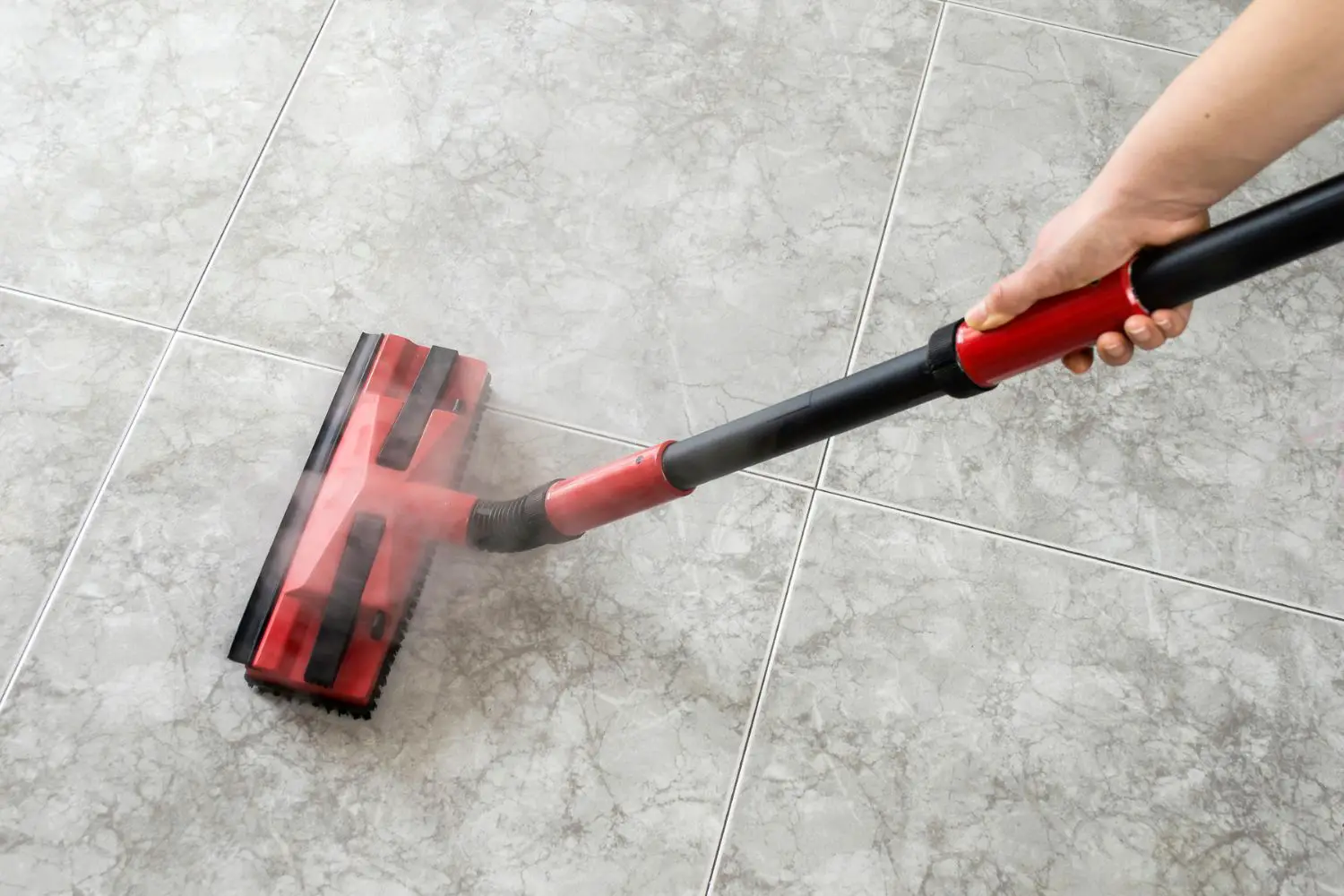Are you tired of scrubbing your tile and grout only to find it still looks dirty and grimy? I know some of you tile enthusiasts have heard about steam cleaning and see it as a solution to nasty grout, so here’s a pop quiz: does steam cleaning damage grout?
Grout is an integral part of tile surfaces that provides structural support and enhances the appearance of your tiles. However, cleaning grout can be challenging as it easily absorbs dirt, grime, and other contaminants. This is where steam cleaning comes into play – a method that promises to effectively eliminate tough stains and grime.
While steam cleaning can be a highly effective cleaning method, it can also cause damage to grout if not done correctly. Grout is porous and sensitive to high temperatures, leading to cracks, weakening, or breakage. Curious to know more about this grout cleaning method? Read on to learn more about the risks associated with steam cleaning and when it is okay to use it.
Does Steam Cleaning Damage Grout?
Steam cleaning can damage the grout if done on improperly sealed or cracked grout, as well as if used on grout types that cannot withstand heat and moisture. However, if the proper precautions are taken, there is no reason to fear using steam cleaning.
Do Steam Mops Clean Grout?
Steam mops have become increasingly popular for cleaning floors, and many people wonder, “do steam mops clean grout?” The answer is yes, steam mops can be an effective tool for cleaning grout, but it is important to understand the differences between types of grout and how they may react to steam cleaning.
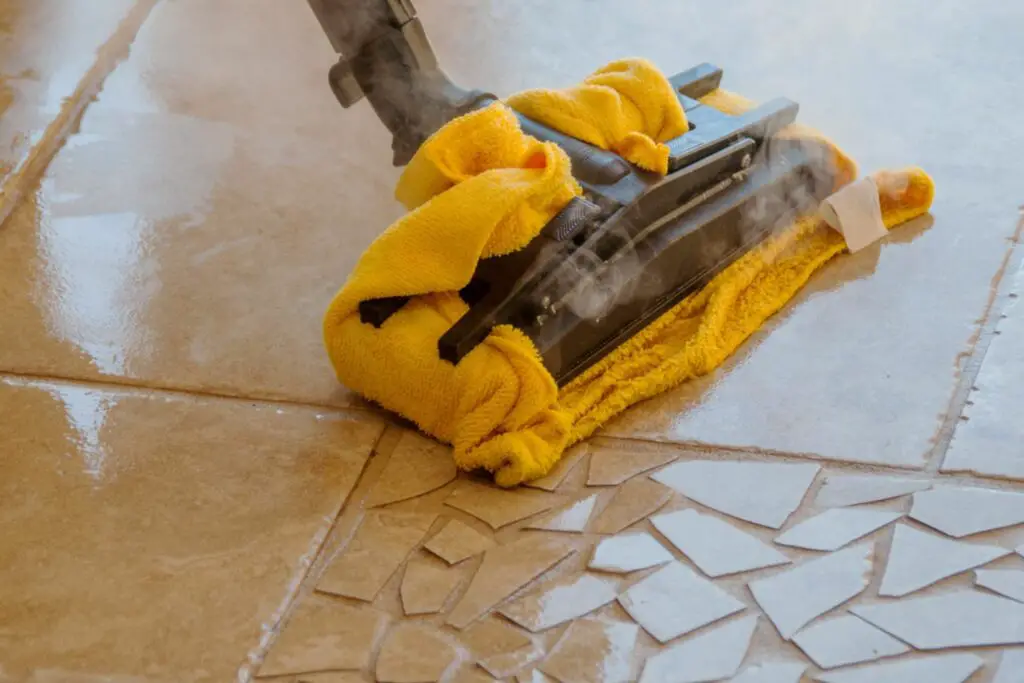
Steam mops work by heating water and creating steam that is then released onto the surface being cleaned. The heat and moisture from the steam work together to loosen dirt and grime, which can then be wiped away with a cloth or mop. Steam mops are effective for cleaning many types of surfaces, including tile and grout.
While steam cleaning is safe for most types of grout, it is not recommended for sanded grout, as it is sensitive to high temperatures and moisture and can easily be damaged by steam cleaning. Steam mops could cause this grout type to slowly crack and chip away.
It is also important to consider the color and sealant of your grout when using a steam mop. Colored or dark grout can sometimes fade or discolor when exposed to high temperatures or moisture. Additionally, if your grout is sealed, you should be cautious when using a steam mop, as the heat and moisture can sometimes break down the sealant.
Always follow the manufacturer’s instructions and test a small area before cleaning the entire surface to ensure the steam mop is safe and effective for your grout.
Is Steam Cleaning Safe for All Types of Grout?
Grout is an essential component of tile installation that fills the gaps between tiles, protecting them from moisture and maintaining the structural integrity of the surface. However, different types of grout can have varying properties, which may impact their response to steam cleaning.
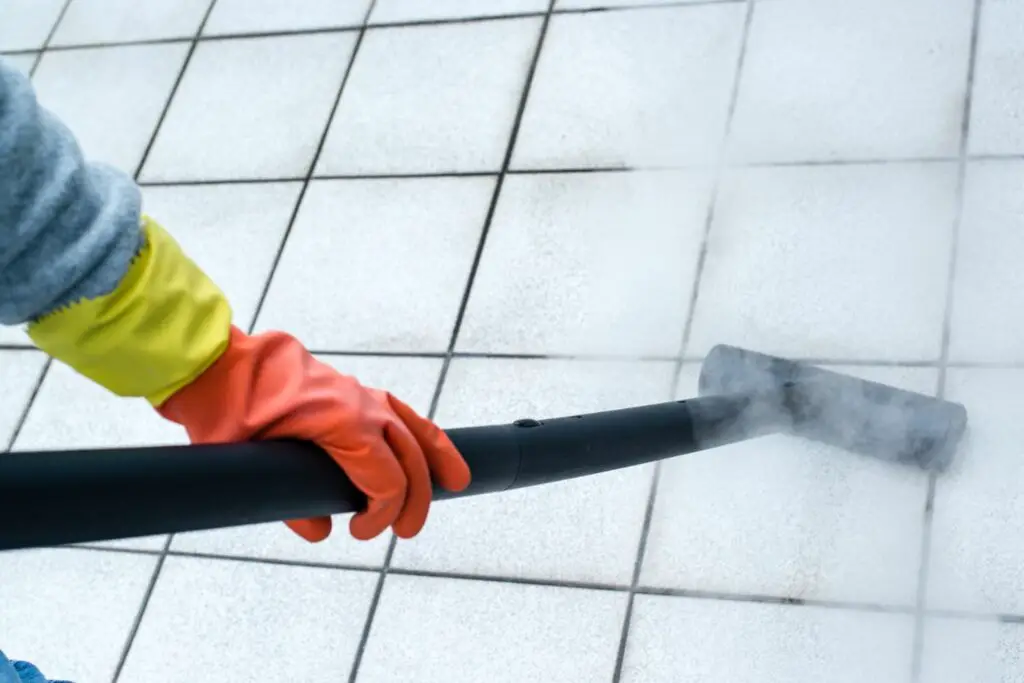
Sanded grout is the most common type, but it is also the most susceptible to damage from steam cleaning due to its porous nature. The steam can penetrate the grout’s porous surface, causing it to expand and potentially crack. On the other hand, unsanded grout is generally safe to clean with steam since it is less porous and is resistant to water absorption.
Colored grout presents a unique challenge since steam cleaning can cause the color to fade or bleed. As such, it is important to test steam cleaning on a small, inconspicuous area before using it on the entire surface. Additionally, it is crucial to follow the manufacturer’s instructions for cleaning colored grout, as some types may require specialized products or methods.
Sealed grout is another type that can be safely steam cleaned. The sealant protects the grout from moisture, reducing the likelihood of damage from steam. However, it is essential to use a lower steam setting and avoid steam cleaning too frequently, as excessive heat can damage the sealant over time. Unlike sealed grout, unsealed one can be damaged from heat and moisture if steam cleaning is done often.
Overall, the safety of steam cleaning for grout depends on the type of grout and its condition. Following the manufacturer’s instructions for the tile and the grout is crucial to avoid any potential damage. If unsure, I recommend you consult a professional before using steam cleaning on your grout.
Can You Steam Clean Unsealed Tiles?
Cleaning unsealed tiles and grout can be a tricky business. Using the wrong cleaning method can lead to irreversible damage to your tiles and grout. One question often arises is whether you can use a steam mop on unsealed tiles and grout.
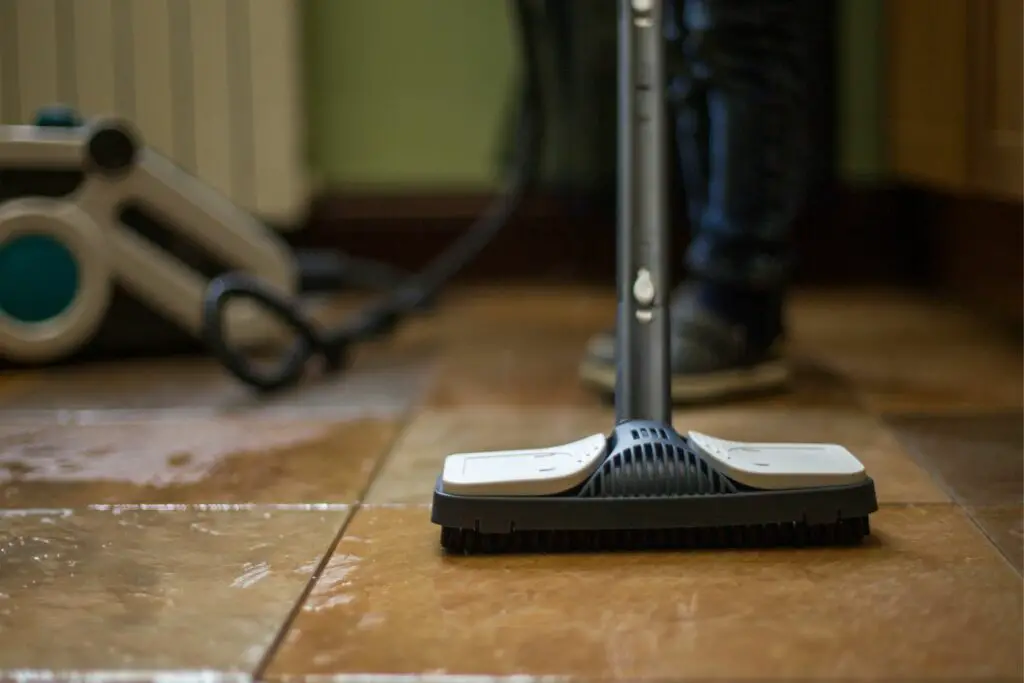
Before I answer that question, let’s first discuss how to know if your tiles and grout have been sealed. A simple test is to place a few drops of water on the grout or tile surface and let it sit for a few minutes. If the water beads up and doesn’t penetrate the surface, your tiles and grout will likely be sealed. If the water is absorbed, then they are most likely unsealed.
You already know the answer to “does steam cleaning damage grout,” but do new or unsealed grout and tiles fall under the category of surfaces at risk for damage from steam mops? The answer is somewhat complex.
While steam mops can effectively clean and sanitize tiles and grout, using them on unsealed surfaces can be risky. The high heat and pressure of steam can penetrate the porous surface of unsealed tiles and grout, causing damage or discoloration.
It is important to note that new grout should not be steam cleaned for at least 72 hours after installation to allow it to cure properly. Testing to confirm the sealing status and consulting with a professional if unsure can help avoid costly damage and ensure your tiles and grout remain looking their best for years to come.
Steam Mop Vs. Traditional Mop
When it comes to cleaning grout and tile surfaces, the debate between steam mops and traditional mops is a common one. While both methods have pros and cons, there are some key differences to consider.
Traditional mops require a bucket of water and cleaning solution, which can be messy and time-consuming. They also tend to leave behind streaks and residue, which can be especially noticeable on tile surfaces. On the other hand, steam mops use hot steam to clean and sanitize surfaces without using chemicals or excess water. This can be a more environmentally friendly option and is generally quicker and easier to use.
When it comes to grout and tile cleaning specifically, steam mops have the upper hand as they can get into the small crevices of the grout, where dirt and grime can build up over time. Traditional mops can struggle to reach these areas, leaving them dirty and discolored.
Additionally, steam mops can often remove stains and discoloration from grout, which may be more difficult to do with a traditional mop.
However, it is important to note that steam mops may not be suitable for all grout or tile surfaces. Porous surfaces, for example, may absorb excess water and become damaged over time. In these cases, a traditional mop may be the better option.
Ultimately, the choice between a steam mop and a traditional mop depends on the specific needs of your surfaces and your personal cleaning preferences.
How to Steam Clean Tile Floors and Grout
Feeling a little lost when trying to clean your tiles or grout with a steam mop? Here is a step-by-step guide to help you get the best results when steam cleaning your tile floors and grout:
- Step 1: Sweep or vacuum the floor to remove loose dirt and debris.
- Step 2: Fill the water tank of your steam cleaner with water and turn it on, following the manufacturer’s instructions.
- Step 3: Allow the steam cleaner to heat up for a few minutes.
- Step 4: Begin by cleaning the tiles, starting at one end of the room and working your way across.
- Step 5: Hold the steam cleaner over each tile for a few seconds, moving the cleaner in a back-and-forth motion. Work in small sections and avoid leaving the cleaner in one spot for too long, as this can damage the grout.
- Step 6: Once you have cleaned all the tiles, it is time to clean the grout. To clean the grout, use the same approach as with the tiles, carefully going over all grout lines.
- Step 7: After you have finished steam cleaning, turn off the steam cleaner and allow it to cool down before emptying the water tank.
Here are some tips to keep in mind when steam cleaning your tile floors and grout:
- Be sure to test the steam cleaner on a small area first to ensure it does not damage your tiles or grout.
- Avoid using a steam cleaner on unsealed grout or natural stone tiles, as the high heat can cause damage.
- Always follow the manufacturer’s instructions for your specific steam cleaner model.
- Be sure to allow the steam cleaner to cool down before emptying the water tank to avoid burns.
- Consider using a pre-treatment solution before steam cleaning heavily soiled grout to help loosen dirt and stains.
- Remember to keep the steam cleaner moving at all times to avoid damaging the grout.
Best Steam Cleaner for Grout
When it comes to cleaning grout, using the right tool is crucial to achieving the best results. The best steam cleaner for grout is undoubtedly the one that can remove dirt, grime, and stains effectively without damaging the surface. Steam cleaning is a safe and eco-friendly way of cleaning grout without using harsh chemicals.
One of the best steam cleaners for grout is the Bissell Powerfresh Deluxe Steam Mop. This steam cleaner is designed specifically for cleaning grout and can effectively remove dirt and grime from the surface. It features a flip-down scrubber that helps to loosen dirt and stains from the grout, making it easier to clean.
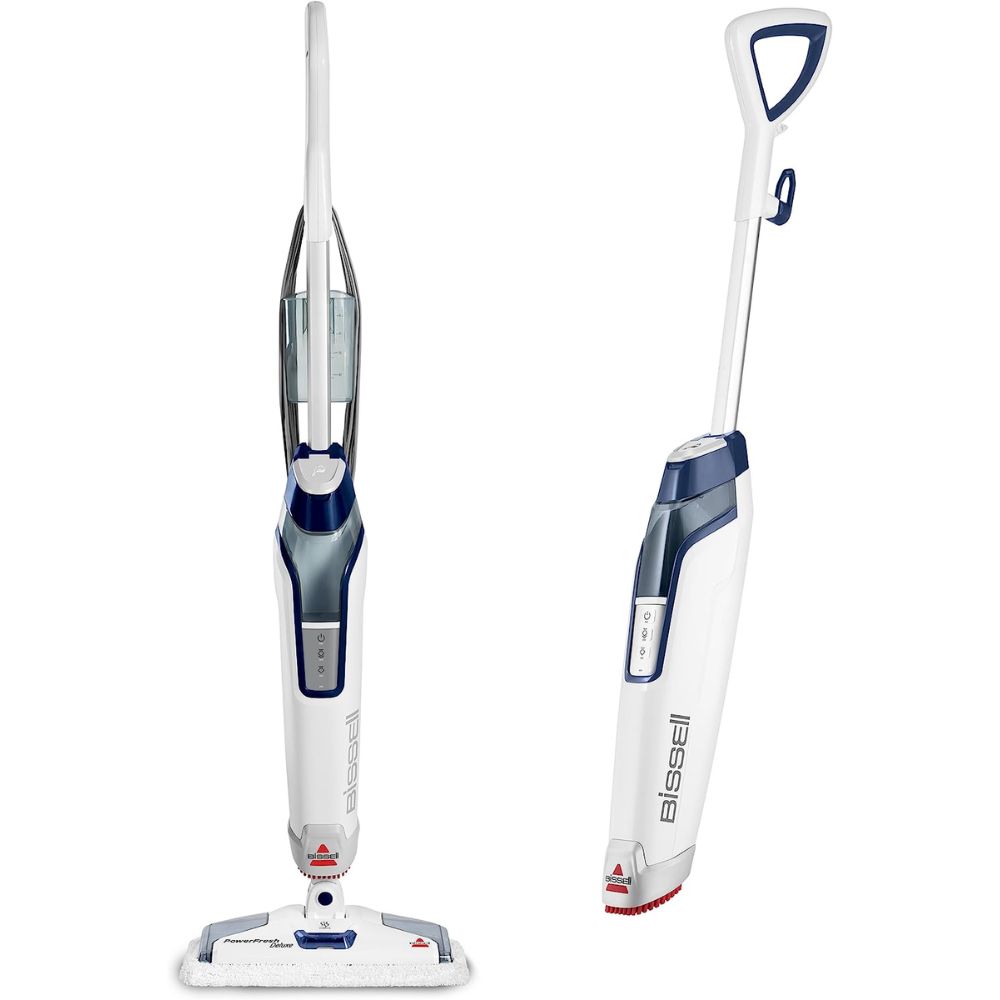
Ceramic & Tile
Marble
Granite
Hardwood
The Bissell Powerfresh Deluxe Steam Mop also has a variable steam control that allows you to adjust the steam output based on the level of dirt and grime on your grout. With its easy-to-use design and powerful cleaning capabilities, the Bissell Powerfresh Deluxe Steam Mop is an excellent choice for cleaning grout.
Another great steam cleaner for grout is the Dupray Neat Steam Cleaner. This steam cleaner is versatile and can be used for cleaning various surfaces, including grout. It features a powerful steam output that effectively eliminates dirt, grime, and stains from your grout.
The Dupray Neat Steam Cleaner also has a large water tank that allows for extended cleaning time without the need for refilling. Its lightweight and portable design makes it easy to maneuver and use for long periods, making it a perfect choice for large grout cleaning projects.
There are many other options in the market that you can find, as steam mops have become a necessity due to how easy they make cleaning tiles and grout. Nevertheless, you might want to give these two a try for excellent cleaning results!
FAQs
Whether you want to steam clean your grout or just want to know some general information about grout maintenance, you might be left with additional questions. Below are some answers to top questions about steam cleaning bathroom grout.
Q: Do I have to reseal grout after steam cleaning?
Yes, it is important to reseal the grout after steam cleaning. Sealing grout helps protect it from dirt, mold, bacteria, and mildew. If you don’t seal the grout lines, these contaminants may become trapped in the porous surface and cause discoloration or deterioration of your beautiful tile flooring or wall tiles.
Sealing also prevents water from seeping into the tile substrate beneath your tiles – this can cause significant damage if not addressed properly over time. Depending on where the tile is located (in a bathroom shower stall or around a pool) and how often you steam clean that area will determine whether or not you need to reseal your grout more frequently than other areas of your home with less wear and tear from moisture.
Q: How do professionals clean grout?
When it comes to cleaning grout, most professionals will use a solution of white vinegar and water with a 1:1 ratio. This mixture is incredibly effective at removing mold, mildew, and other forms of filth from the porous surfaces found in between tiles. To begin the process, start by mixing one part of white vinegar with one part of the water in a spray bottle.
Once you’ve done that, apply the solution liberally onto the area of grout that needs cleaning. After you’ve sprayed on the mixture, allow it to sit for about 10 minutes before scrubbing off any excess residue with a brush or sponge. For tougher stains or areas where there is caked on dirt, you may need to repeat this process several times over before signs of improvement are visible.
Q: How long does it take grout to dry after steam cleaning?
After steam cleaning bathroom tiles, you may find yourself wondering how long grout takes to dry. It typically takes 30 minutes for grout to dry after steam cleaning. But, it is important to remember that drying time does not equal curing time.
Drying is when the excess moisture on the surface evaporates and grout can be lightly touched without feeling wet or sticky. This normally happens in about 30 minutes after steam cleaning, but this may vary depending on environmental conditions such as humidity and air flow.
Curing is when the hardened material forms a firm bond with the substrate (or surface) below it and its strength builds over time. Grout usually takes at least 24 hours to cure after being steam cleaned before full strength performance can be fully realized.
Q: Are steam mops good for tile floors?
Yes, steam mops are good for tile floors! Steam mops provide incredibly effective and sanitary cleaning of your tile floors. They are safe to use on any type of ceramic or porcelain tile, no matter the finish. The heat created by these mops easily cleans up dirt and grease that has collected on your floor without leaving behind a sticky residue.
